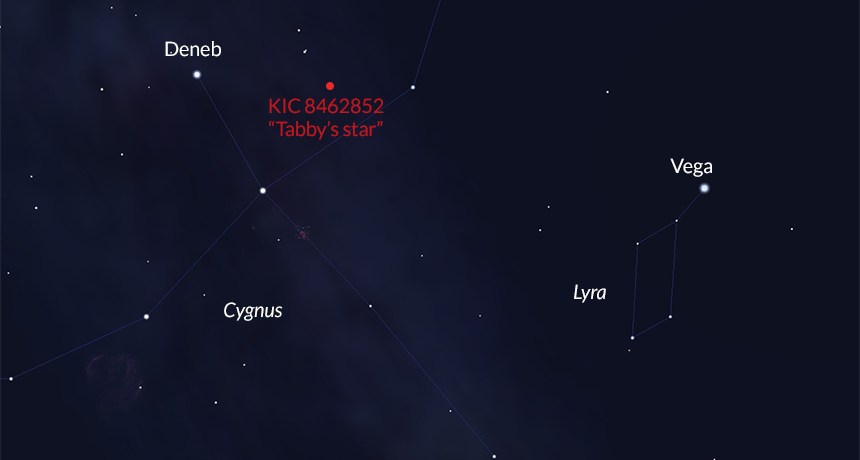
IN FLUX The star KIC 8462852 (aka Tabby’s star), which sits in the constellation Cygnus (illustrated), has been flickering and fading — and astronomers still don’t know why.
C. Crockett, Stellarium

IN FLUX The star KIC 8462852 (aka Tabby’s star), which sits in the constellation Cygnus (illustrated), has been flickering and fading — and astronomers still don’t know why.
C. Crockett, Stellarium